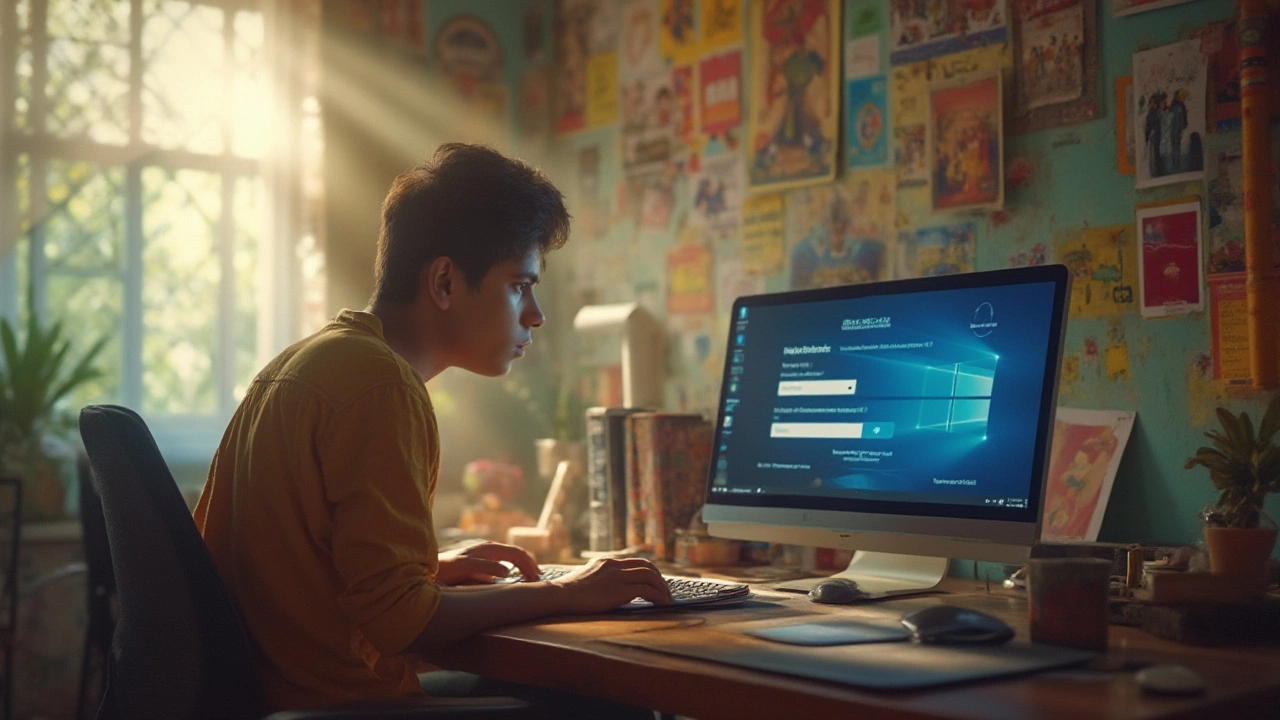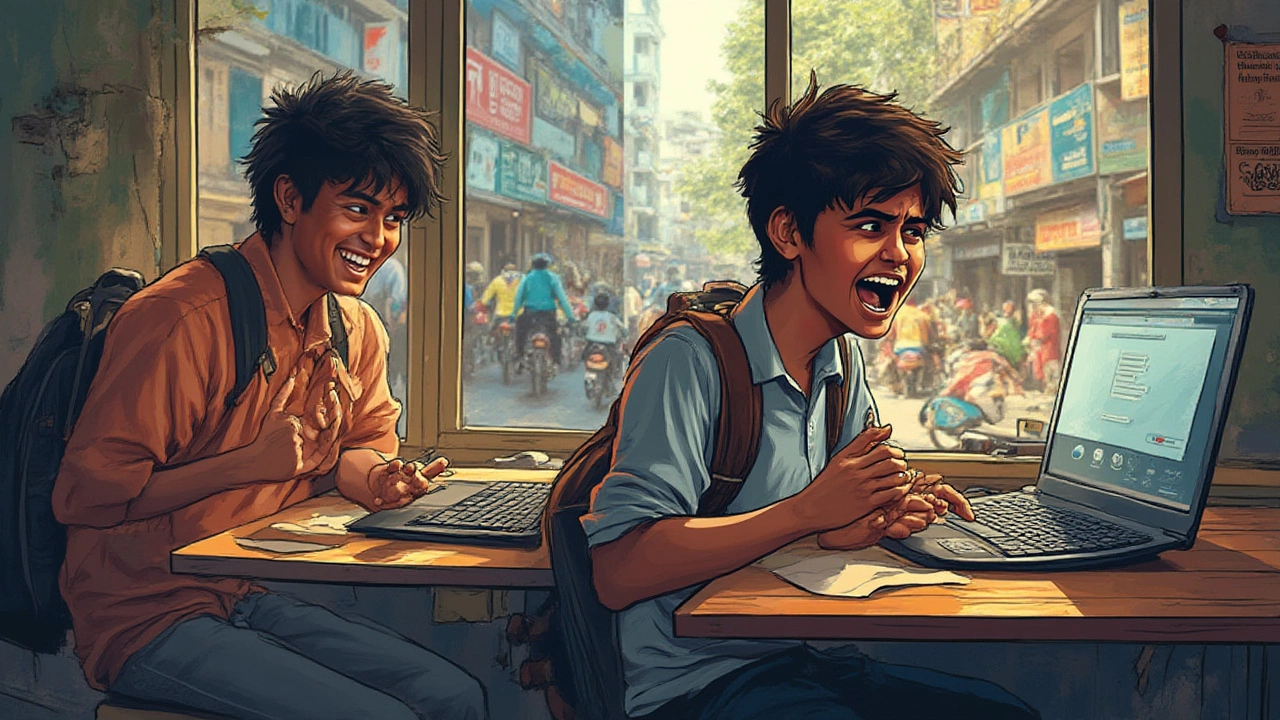Is Photoshop Free: What You Need to Know in 2025
 Jul, 22 2025
Jul, 22 2025
Photoshop. The name alone makes designers and photographers perk up. But let’s be real—most of us, at some point, have frantically Googled “Is Photoshop completely free?” hoping for some magic loophole. What you’ll find isn’t always clear. Some folks talk about free versions, cracked copies, or open-source lookalikes. The digital world gets messy fast. With so many rumors and supposed shortcuts, it’s no wonder people get confused. So, can you use Photoshop legally for free in 2025? Stick around—I'm breaking it all down, no sugar-coating, no guesswork.
The Truth About Photoshop’s Pricing and Free Trials
If you type “free Photoshop” into a search bar, you'll get all sorts of answers—some real, others wishful thinking. Here’s how it really works: Photoshop free is a phrase Adobe would love to scrub from the internet, because Photoshop has never been completely free. Adobe runs a subscription-based model. You pay monthly or yearly to use Photoshop as part of Adobe Creative Cloud. That’s the official, always-updated, cloud-connected version—the one working photographers and agencies use everywhere. Want a sense of how big Photoshop is? Adobe reported over 22 million Creative Cloud subscribers in 2024. That’s a lot of people paying monthly for the privilege.
If you’re new to the software, Adobe does offer a free trial—traditionally seven days, but at times they bump it up during promos. The catch? After your trial, you’ll need to hand over your credit card. Forget about hopping from account to account endlessly; Adobe’s system is way smarter than that now. No matter how many fake email addresses you create, they track your device and IP address, shutting down repeat freebie attempts.
Take a look at what you get (and don’t) from the trial versus paid subscription:
| Plan Type | Duration | Features Included | Watermark/Limitations |
|---|---|---|---|
| Free Trial | 7 days (may change) | Full Photoshop, all features | None during trial, but access ends after 7 days |
| Paid Subscription (monthly) | Ongoing—$20.99/mo (2025 price) | All Photoshop tools + updates + cloud storage + support | None |
Monthly costs add up. Adobe’s Photography Plan runs about $9.99/month but includes just Photoshop+Lightroom with limited cloud storage. Standalone Photoshop is pricier. No one gets unlimited Photoshop for free from Adobe, even students—though some schools have site licenses for campus computers.
Pirated Versions and the Legal Risks People Overlook
If you’re tempted to grab a pirated Photoshop, you aren’t alone. Cracked versions spread everywhere—YouTube videos, shady file-sharing sites, sketchy “blog” articles promising secret links. It might seem easy. Click a link, download, follow some instructions, install… boom, free Photoshop? Not so fast. Most cracked Photoshop files are crawling with malware. In 2023, the cybersecurity firm Malwarebytes found that 53% of the most popular pirated copy installs included high-risk malware—ransomware, spyware, and cryptominers. You don't just risk your project files; you could lose your whole computer or worse if hackers get access to personal data like bank accounts or client files.
Legally, you’re walking on very thin ice. Adobe aggressively pursues copyright violations, and they do file lawsuits. Think, "I’m just a student, who would care?"—wrong! Adobe’s bots crawl torrent networks and forums, and their legal team has cracked down globally, not just in the US or Europe. The penalties for copyright infringement can reach thousands of dollars, even if you “just wanted to try Photoshop out.” Plus, pirated versions never get updates or new features. When that next software glitch or update rolls around, you’re instantly left behind, and many add-ons and presets simply won’t work as intended.
You might also be exposing your clients or employer to legal risks if you use cracked software for paid gigs. Reputable creative agencies or businesses will check your software licenses—and a surprise Adobe audit is a headache no freelancer wants.

Legit Free Alternatives to Photoshop in 2025
So you’re probably thinking, “Alright, if Photoshop isn’t free, what’s my next best option?” Luckily, in 2025, there’s a pretty impressive lineup of safe, legal Photoshop alternatives. Some won’t cost you a dime; others charge a small one-time fee or have freemium models. Here are the ones you should know about if you want most Photoshop features without the Adobe invoice:
- GIMP (GNU Image Manipulation Program): This open-source classic is still going strong and totally free on Windows, Mac, and Linux. It’s got layers, masks, retouching tools, advanced color controls, and a plug-in universe. The interface feels clunkier than Photoshop but does 80% of the same tricks if you’re willing to tweak and Google a bit. In 2025, GIMP even supports some PSD files and high-res projects—but you might miss some special blending modes.
- Photopea: Want to work right inside your browser? Photopea is a free web-based editor, and it feels surprisingly close to Photoshop, even supporting PSD, XCF, Sketch, and RAW files. No download, no installation, just open and go. Great for school or shared computers. Free version has mild ads but everything works.
- Krita: Built mainly for digital painting, Krita has a cult following among illustrators but is getting stronger for photo editing too. It’s free with regular updates and hundreds of brushes and plug-ins. Most hobbyists can do all their retouching in Krita.
- AFFINITY PHOTO: Not free, but a single $69.99 payment (as of July 2025) gets you a pro-level Photoshop rival with nearly all the bells and whistles. That’s a lifetime license—no forcing you into a subscription spiral. Many pros and small agencies are switching to Affinity to break up with monthly payments.
- Canva: If you need simpler edits, resizing, or graphics for social, Canva’s free plan is the king of drag-and-drop design (with a paid Pro plan if you want the full shebang).
If you want top-tier photo retouching and batch editing, GIMP and Photopea are your best free bets. Both see regular updates and have helpful YouTube communities for learning tips and tricks. Affinity is the closest paid Photoshop match.
And if you’re only making basic edits, cropping, resizing, or whipping up quick social posts, even free web tools like Pixlr, Fotor, and BeFunky are worth a try. Most of them run on Chromebooks, old PCs, tablets—you name it—so no fancy hardware needed. It’s no longer Adobe or nothing.
When to Actually Pay for Photoshop—and How to Save If You Need It
There are times when nothing but real Photoshop will do. If you work with high-end commercial images, need precise color management for print, build massive layered compositions, or swap files with ad agencies where everyone expects PSD format, Photoshop’s subscription makes sense. You’re not paying just for fancy filters—you’re getting features like AI-powered object selection, neural filters, cloud syncing with Illustrator, version history, and universal compatibility.
Still, you can save money in a few honest ways. First, check your school or workplace. Many universities bundle Adobe licenses into tuition now, and some big companies have enterprise deals. If you’re a teacher or student, Adobe nearly halves the price, so don’t miss the student discount. Ever since 2022, Adobe’s “Photography Plan” (Photoshop plus Lightroom) has stayed the cheapest way in—usually $9.99/month—if you can live with bundled cloud storage limits. Check the Adobe Student and Teacher pricing page every six months; they sometimes quietly bump up trial durations or cut prices for back-to-school.
Got a complex project, but only need Photoshop for a month or two? Use the 7-day free trial, plan your work, then pay for one month and cancel. Adobe doesn’t lock you in for a year unless you pick the annual plan, so you really can dip in and out as needed. Another tip: watch for Adobe’s Black Friday or back-to-school deals—sometimes 40% off for the first year. Just remember, as of 2025, monthly pricing for Photoshop alone or Creative Cloud hasn’t really come down, even as competitors get cheaper.
A lot of creative folks I know use both: free tools like GIMP or Photopea for most of their personal stuff, then shell out for Photoshop on big, well-paid jobs for clients that demand it. Learn the basics on a freebie and save your subscription budget for when it’ll pay off.
Here’s a table with the most popular photo editing software and their costs in 2025:
| Software | Cost | Free Trial? | Main Pros |
|---|---|---|---|
| Adobe Photoshop | $20.99/mo (single app), $9.99/mo (Photography Plan) | 7 days | World standard; pro tools; AI-powered features |
| GIMP | Free | N/A | Open source; strong community; advanced editing |
| Photopea | Free (ads); $5/mo (Premium) | N/A | PSD support; browser-based; familiar interface |
| Affinity Photo | $69.99 (one-time) | 30 days | No subscription; pro-level features |
| Krita | Free | N/A | Great for digital painting; growing editing tools |
| Canva | Free; $12.99/mo (Pro) | 30 days (Pro) | Easy for graphics and social posts |
Bottom line: No, Photoshop isn’t completely free, and those "secret" downloads are more dangerous than they are useful. Lucky for us, 2025 is a great time to explore honest alternatives or mix and match depending on your project—and keep your conscience (and computer) clean.